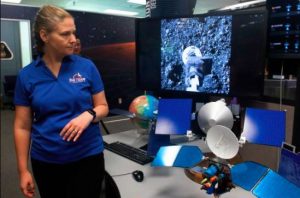NASA has revealed that the initial asteroid samples collected from deep space by the OSIRIS-REx spacecraft contain twice the expected amount of material. NASA Administrator Bill Nelson shared his excitement about the remarkable discovering, mentioning that this asteroid sample rich in carbon is the biggest one ever brought back to Earth. The extensive data collected is anticipated to support pioneering research on the beginnings of life on Earth.
While the delivery occurred last fall, unexpected challenges arose during the process. NASA reported that the disassembly of the Touch-and-Go Sample Acquisition Mechanism (TAGSAM) was temporarily halted due to two stuck fasteners. Overcoming this obstacle required the development of new tools by scientists from the Astromaterials Research and Exploration Science (ARES) division.
NASA confirmed that 70% of the sample will be stored at Houston’s Johnson Space Center for further research by scientists worldwide. In the coming spring, a catalog of the OSIRIS-REx samples will be released, allowing the global scientific community to request access for their research.
Asteroid Sample Return Unveils Cosmic Mysteries

The OSIRIS-REx mission, officially named Origins, Spectral Interpretation, Resource Identification, Security-Regolith Explorer, involved the collection of samples from the surface of the asteroid Bennu. The spacecraft, equipped with solar panels, successfully delivered a 3-foot-wide Sample Return Capsule to Earth, containing half a cup of 4.5 billion-year-old asteroid samples.
The mission, with a total cost of $800 million excluding launch expenses, faced delays in its research due to stubborn fasteners. However, by January 2024, the team developed the necessary tools to safely remove the fasteners from the TAGSAM. In February, NASA confirmed the successful opening of the TAGSAM, acquiring the remaining 4.29 ounces of samples from Bennu.
NASA Administrator Bill Nelson highlighted the value of missions such as OSIRIS-REx, underlining their contribution to improving our knowledge of asteroids that could potentially endanger Earth and offering insights into the mysteries of the universe. Despite the successful return of the sample, Nelson is looking forward to the groundbreaking scientific discoveries that will stem from this extraordinary mission.
